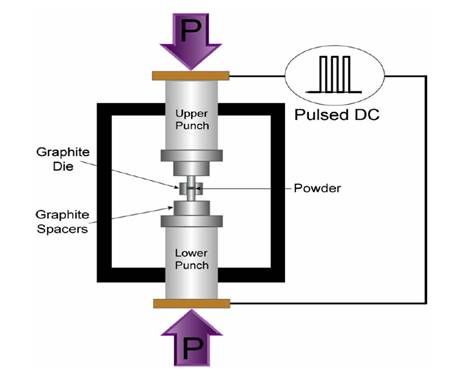Paper: 10 to 25-fold increase in the transport superconducting critical current density of spark-plasma sintered Bi-2223 superconductors. E. Govea-Alcaide, I. F. Machado, and R. F. Jardim. Journal of Applied Physics 117, 043903 (2015). DOI: 10.1063/1.4906560.
A paper recently published in the Journal of Applied Physics, signed by two Brazilian researchers and one Cuban researcher, brings relevant contributions to the study of superconductor materials – those that allow the flow of electric current without resistance (literally, with zero electric resistance).
Superconductivity occurs in certain materials under certain conditions. There is, for example, a condition called “critical superconductor temperature”, above which superconductivity does not occur. And there is also a “critical current density” (the quantity of electric current that goes through a certain area), above which superconductivity is destroyed.
In the paper reported in the Journal of Applied Physics, the authors present a route that allows the increase of the critical current density of Bi-2223 by over 25 times at the temperature of liquid nitrogen (77 K, that is, some 195 °C negative).

The method works from the Bi-2223 powder (a mixed oxide of bismuth, strontium, calcium and copper), consolidated by means of the spark plasma sintering technique (SPS) at temperatures close to 800 °C and thermally treated at 750 °C for 5 minutes. The route opens possibilities for several applications of the material. “The optimization of superconductor properties of interest, such as the critical superconductor current, seems to be very relevant for the area of applications of superconductors in general”, assesses physicist Renato de Figueiredo Jardim, author of the paper and professor of the Physics Institute at the University of São Paulo (USP).
In addition, in the article the authors proposed which mechanisms occur in the material’s microstructure to explain the increase in said superconductor property.

Initially, the scientists were able to confirm that, after the plasma sintering process, Bi-2223 showed elongated blade-shaped grains, made up of shells and cores. The researchers found that the shell, which is the edge of the grain, was oxygen deficient, which constitutes a problem in a certain way, given that such element is fundamental to improve the superconductor properties of Bi-2223 by optimizing its intergranular properties.
However, the brief thermal treatment given after the consolidation of the material caused significant results. “The thermal treatment was fundamental for the reestablishment, even if partial, of sound superconductor properties in the material prepared by SPS”, Renato Jardim states. In fact, the treatment decreased the width of the oxygen-deficient shell, propitiating the increase of conduction of the electric current between the grains. “The reestablishment of oxygen in the material occurs through the grain contours and is certainly not total, that is, it occurs in certain portions of the grains boundaries, establishing “pathways” with low electrical resistance, through which electric current, for example, can connect the material superconductor grains”, the professor summarizes.
According to professor Jardim, his scientific collaboration with the first author of the article, physicist Ernesto Govea Alcaide, currently a professor of the University of Granma (Cuba), is over 15 years long, and dates back to Govea Alcaide’s doctorate research, carried out between 2001 and 2005 within a CAPES/MES (Brazil/Cuba) agreement, coordinated by professors Jardim (by USP) and Pedro Mune (by the University of Oriente, in Cuba). At such time, Govea Alcaide started a systematic study of the preparation of superconductor compounds, aiming at technological applications.
“It is important to stress that superconductor materials with potential for technological applications require certain very specific characteristics, that is, the materials must have: (i) a single crystallographic phase; (ii) high texture; (iii) high density; and (iv) low electric resistance grain boundaries”, professor Jardim explains.
With such characteristics in mind, in a work stage under the bilateral agreement, Govea Alcaide began the preparation of superconductor materials. In a visit to São Paulo, Jardim tells, Govea Alcaide got in touch with the group headed by professor Izabel Machado, also an author of the article, and using the facilities of her laboratory he produced Bi-2223 samples by means of the SPS technique based on powders of such high-quality material, the production of which was already dominated at professor Jardim’s laboratory.
According to professor Jardim, a greater set of scientific articles regarding the same topic of the article mentioned here and recently published by professors Govea Alcaide, Machado and Jardim, among other researchers, has just been given an award from the Academy of Sciences of Cuba as one of the works of greater scientific contribution in 2014.
The work whose results were reported in the article in the Journal of Applied Physics relied on funding from Brazil (Fapesp, CNPq, CAPES and Petrobras) and from Cuba (Higher Education Ministry – MES).
